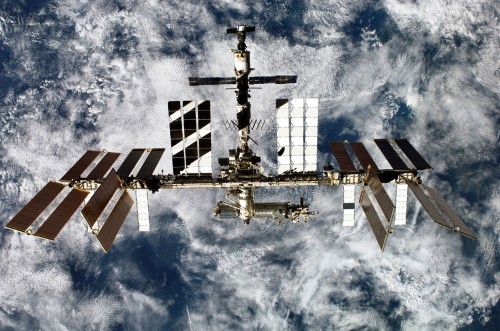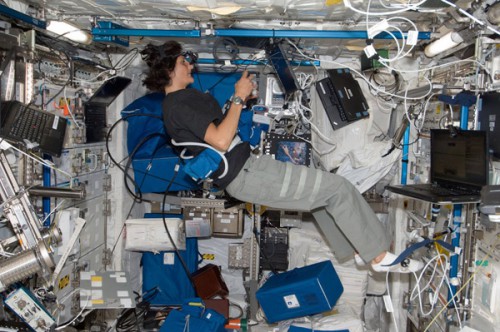
The International Space Station is the ninth crewed space station to be built, and with a mass of approximately 450 tons, a width of 354 feet (108 meters), and a pressurized volume of 2746 (837 cubic meters), it is by far the biggest. Construction on the orbiting laboratory started in 1998 and is still ongoing (Russian elements are still being readied for launch).
With the retirement of the space shuttle fleet, the only way at present to transport astronauts to and from the station is via Soyuz spacecraft. This minuscule vessel only allows three crew members to be launched at any one time. However, by the mid-2010s, the U.S. could regain an independent capability to launch crews into low-Earth orbit using commercial vehicles such as SpaceX’s Dragon spacecraft.
Only two more pressurized modules are scheduled to be launched and attached to the existing complex. The Multipurpose Laboratory Module (MLM), also called Nauku (Russian for “science”), will become the major Russian laboratory at the ISS. Due to arrive in 2014, along with the European Robotic Arm, it will replace the Mini-Research Module 2 (MRM 2). The other addition, also slated for arrival in 2014, is the Uzlovoy Module (UM). This four-ton, ball-shaped component will support the docking of two scientific and power modules during the final stage of the station assembly. It will also furnish the Russian segment of the ISS with extra docking ports to receive Soyuz TMA (crew-carrying) and Progress M (cargo-carrying) spacecraft.

Looking further down the road, all that is certain for now is that the ISS is funded out to 2020. Its operations may continue until 2028 depending on finances and international politics at the time, and, just as crucially, on the recertification of key onboard systems. Eventually, the time will come when the station has to be de-orbited in as controlled and safe a manner as possible. But before that happens, the Russian Federal Space Agency (RSA/RKA) is interested in using the ISS to commission modules for a new space station, called OPSEK (Orbital Piloted Assembly and Experiment Complex).
In the long term, all the major space-faring nations are looking at ways of establishing a permanent presence in space and of how best to accomplish crewed missions to other planets. The Russian concept is to build a third-generation space station using, as a starting point, modules from the Russian segment of the ISS. When complete, OPSEK would be used to assemble interplanetary spacecraft destined for Mars and possibly beyond. Returning crews would also stop off at the station to recover and reacclimatize before landing on Earth.
At some point in the 2020s, it will become necessary to implement End Of Life (EOL) plans for the ISS. A number of proposals have already been put forward explaining how to de-orbit this massive piece of hardware so that whatever pieces of it are not destroyed upon re-entry will splash down safely in the ocean. Fortunately, there are various ways to control the movements of the ISS—for example, using European ATVs or Progress ships so that it can be accurately moved into a disposal corridor. On that day, observers on Earth will be treated to a once-in-a-lifetime, man-made celestial firework display.
Missions » ISS »



Why not dump on it on the moon? Even if that effectively reduces it to scrap metal, scrap has its uses, and the cost is sure to be less than the ten thousand bucks per pound it would take to transport material from earth to the moon.
Alternately, boost it into geosynchronous (or higher) orbit, on the theory that in a century or two someone will find a use for the old birth. Just dumping a muti-billion dollar space station into the drink for the sheer pleasure of making it go splash! is what children would do. Or vandals.